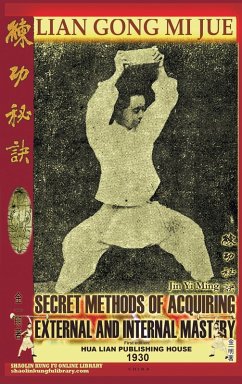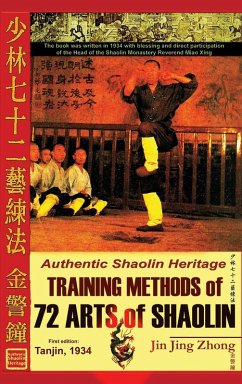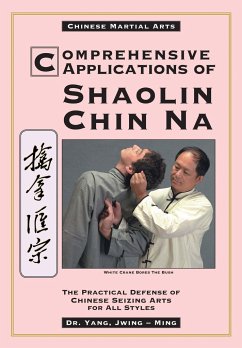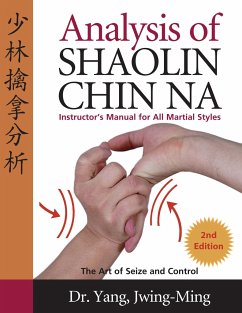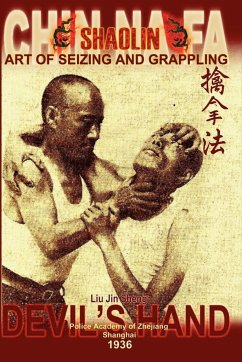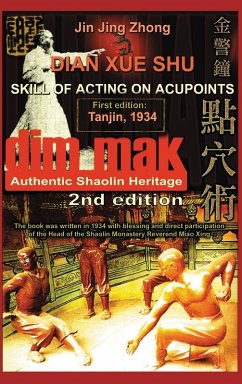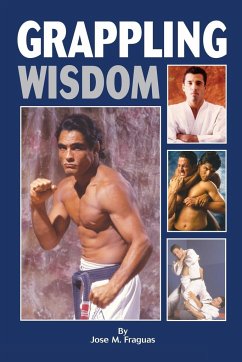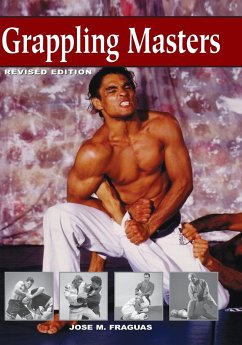
Shaolin Chin Na Fa. Art of Seizing and Grappling
Instructor's Manual for Police Academy of Zhejiang Province (Shanghai, 1936)

PAYBACK Punkte
13 °P sammeln!
The book "CHIN NA FA" was written by Liu Jin Sheng in collaboration with Zhao Jiang. The first edition of the book was issued in July of 1936 as a manual for the Police Academy of Zhejiang Province. The book was printed by the publishing house Shan Wu in Shanghai. " Techniques (FA) of CHIN NA include a wide set of various movements: press and blows on vulnerable points, grappling, strangling, throws and so on. That set of movements (impacts on the enemy) allows to realize the following methods: "Separation (tearing) of muscles and sinews" (FENG JING), "Dislocating (breaking out) of bones and j...
The book "CHIN NA FA" was written by Liu Jin Sheng in collaboration with Zhao Jiang. The first edition of the book was issued in July of 1936 as a manual for the Police Academy of Zhejiang Province. The book was printed by the publishing house Shan Wu in Shanghai. " Techniques (FA) of CHIN NA include a wide set of various movements: press and blows on vulnerable points, grappling, strangling, throws and so on. That set of movements (impacts on the enemy) allows to realize the following methods: "Separation (tearing) of muscles and sinews" (FENG JING), "Dislocating (breaking out) of bones and joints" (YU GU), "Suffocation" (BI QI) and "Impacting on points" (DIAN XUE). Also, those methods must be used skillfully, not just with brute force. Both army and police always attached great importance to this art. The introduction to the book says: "Initially this skill had several names: FENG JING FA - "The technique of separation (breaking) of muscles and sinews"; DI TANG FA - "Methods of combat when lying on the ground"; YU GU FA - "The technique of dislocation (breaking out) of bones and joints" and CHIN NA FA - "The technique of catch and hold." At present the name CHIN NA FA has predominantly become established. Totally, there are 72 methods. The ancient manuscript calls this skill DI SHA SHOU - "Devil's Hand". "...If you are in command of this technique, you can sway the destiny of the enemy. You can kill your enemy, cause unbearable pain, tear his muscles and sinews, break his bones or make him unconscious for some time and completely disable him to resist. Even a woman or a physically weak man who mastered this technique can curb a strong enemy. This technique demands deftness and skill, not brute force. It is necessary to train oneself daily to make the body flexible and nimble, but "hardness" must be hidden inside this "softness." - Liu Jin Sheng. The Police Academy of Zhejiang province. 1-st of May of the 24-th year of the Chinese Republic (1935). "If two outstanding fighters encountered in a combat, like a tiger against a tiger, the outcome of the combat depends on a measure of skill in CHIN NA. He is in the process of transforming, so do I, closely following him. Blows and grips follow continuously, without a moment's respite. You see an opening and needle your way into the vulnerable spot, clear a passage and rush forward." - SHAOLIN QUAN SHU MI JUE - Secret Directions for Shaolin Pugilistic Art. Peking, 1915.




